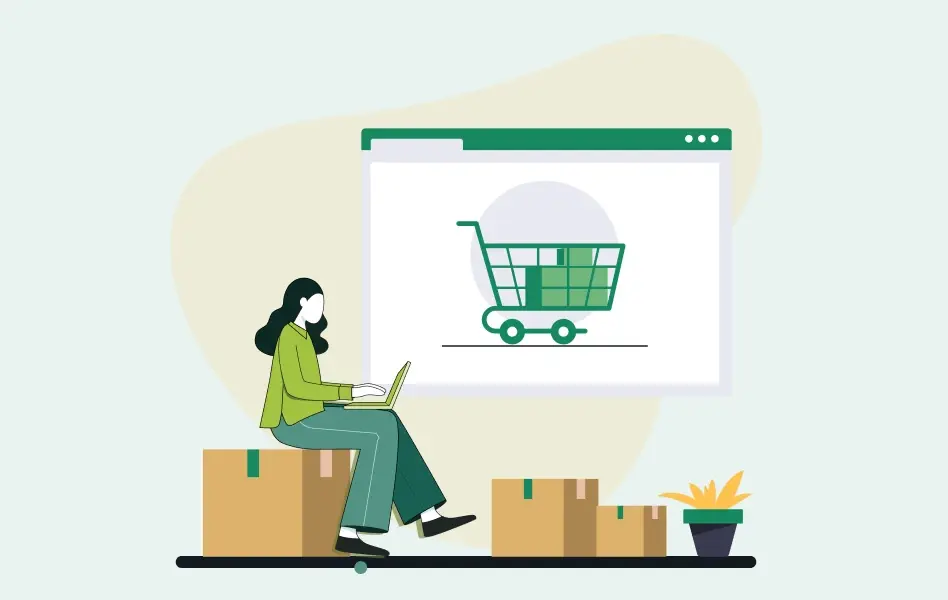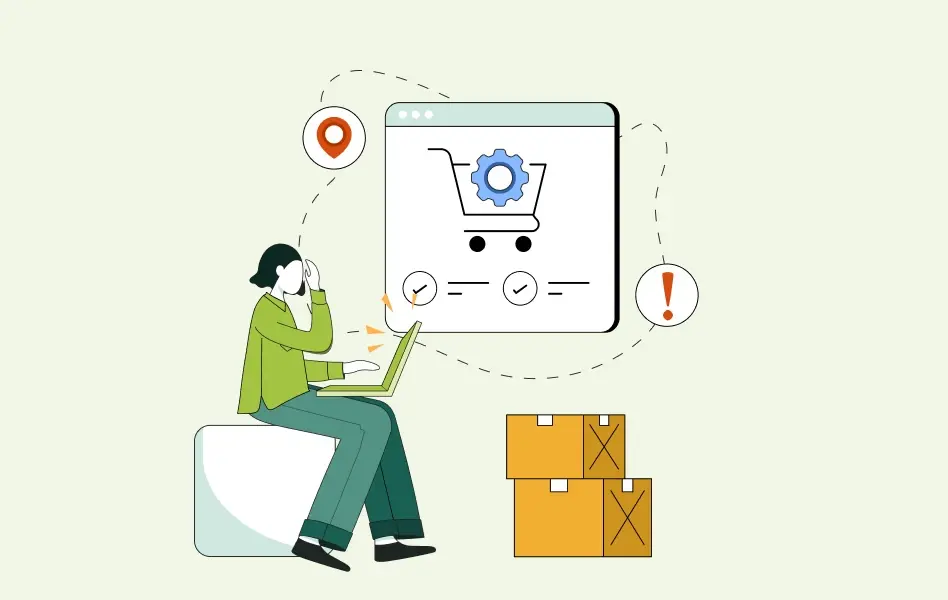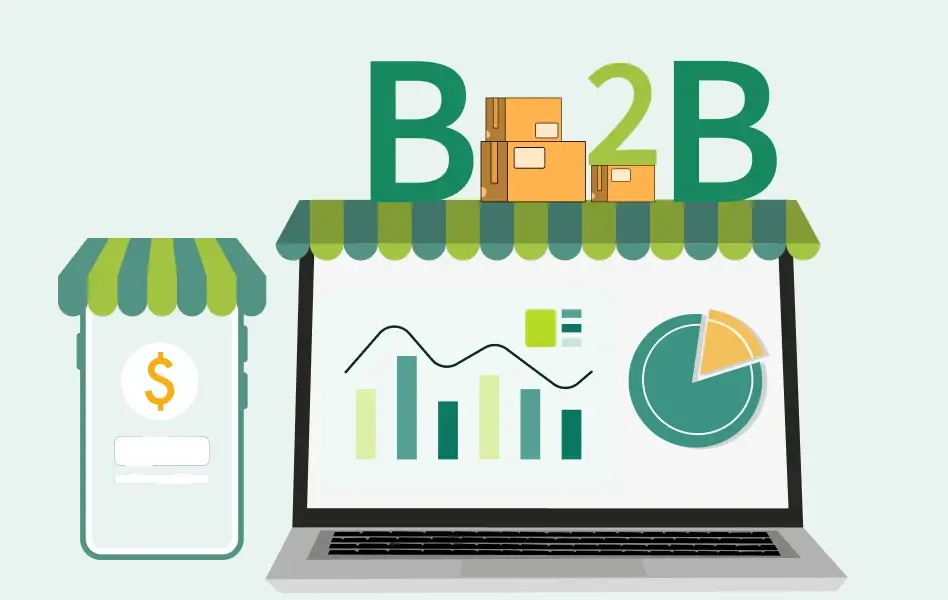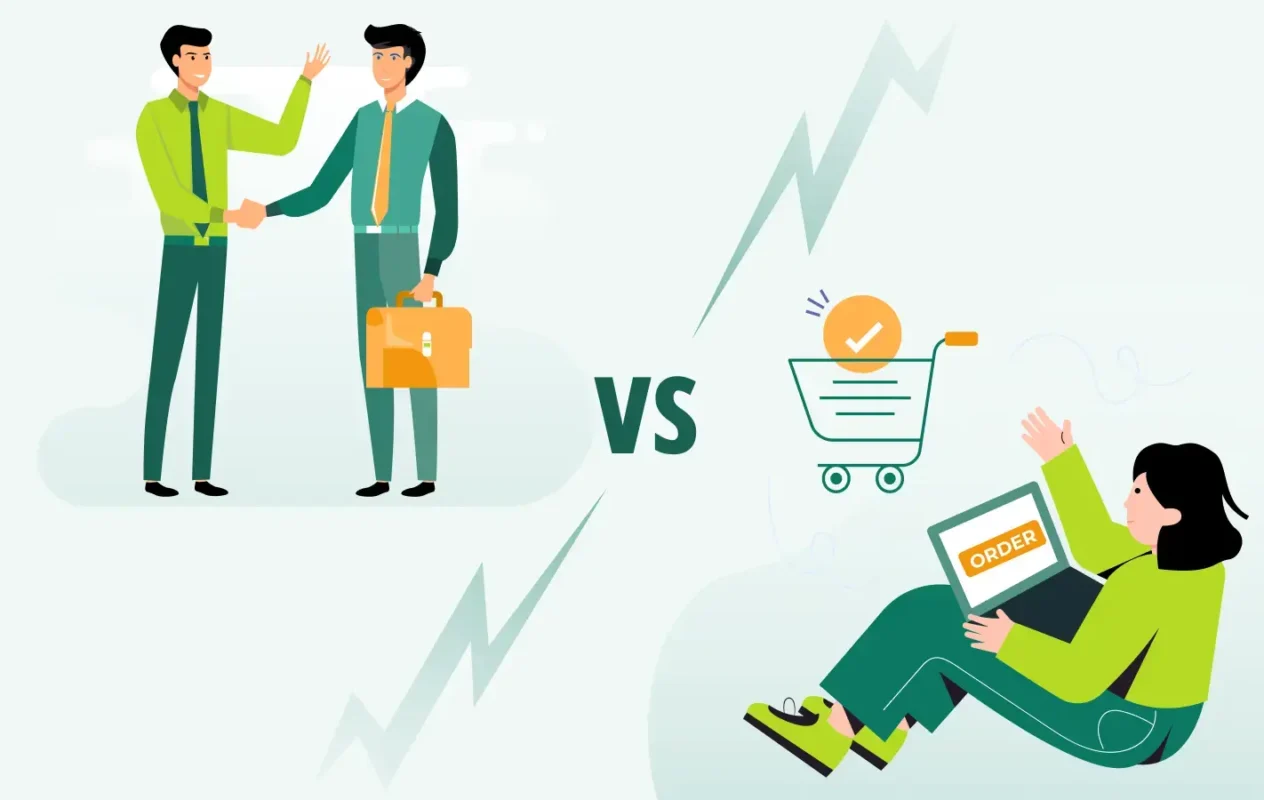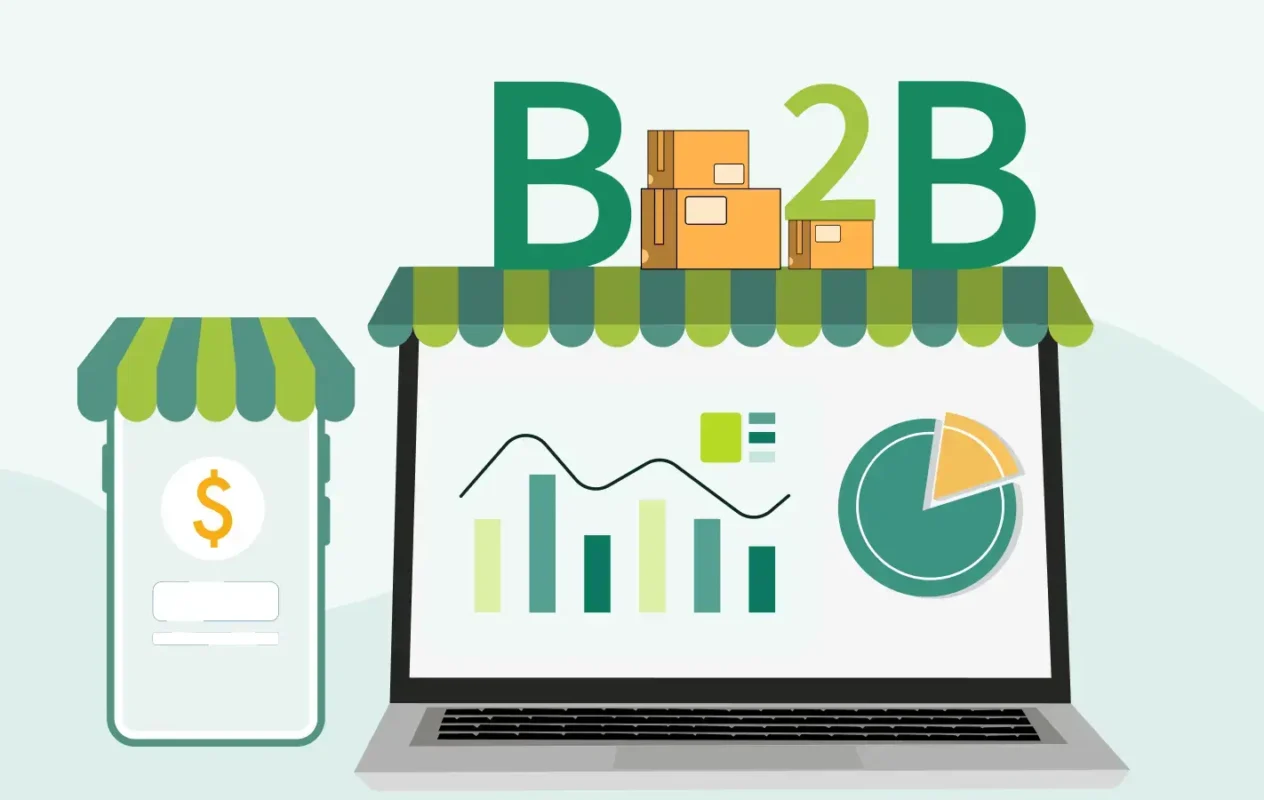Contents
- 1 The Rising Importance of B2B commerce Platform in 2024
- 2 Main Costs Associated with B2B Commerce Platforms
- 3 Platform Licensing & Subscriptions
- 4 Enhancing Your B2B Commerce Platform: Costs of Add-ons, Plug-ins, and Extensions
- 5 Website Design & Development
- 6 Ensuring Seamless Data Migration & Integration for B2B Commerce
- 7 Ongoing Maintenance & Support for B2B Commerce platforms
- 8 Bonus: Explore WizCommerce- a Cost-Effective and Customizable B2B E-commerce Solution
- 9 Conclusion
As the digital landscape continues to evolve, businesses are increasingly turning to B2B commerce platforms to streamline their operations and enhance customer experiences.
In 2024, understanding B2B commerce platform pricing will be crucial for organizations aiming to leverage these platforms effectively. With a variety of pricing models and features available, businesses must evaluate their options carefully to select a platform that aligns with their goals and budget.
In this article, we’ll explore the factors influencing B2B commerce platform pricing and provide insights to help businesses make informed decisions.
The Rising Importance of B2B commerce Platform in 2024
In 2024, B2B commerce platforms have become essential for businesses looking to modernize their operations and tap into the growing digital market. These platforms help companies manage large volumes of orders, offer personalized pricing, and streamline supply chain processes.
As more businesses shift online, having a robust B2B commerce platform is no longer a luxury—it’s a necessity for staying competitive and efficient in today’s market. However, choosing the right platform isn’t just about features; understanding the costs involved is equally important.
From initial setup to long-term maintenance, B2B commerce platform costs vary based on several factors, which we’ll explore next.
Key factors driving b2b commerce platform pricing
The cost of implementing a B2B commerce platform depends on a variety of factors. Here are the key elements that impact pricing:
- Platform Features and Scalability
Platforms offering advanced features like bulk order processing, real-time inventory management, and customer-specific pricing typically come at a higher cost. The more scalable the platform, the more businesses can expect to invest upfront. - Customization and Integrations
The level of customization required to meet specific business needs will also drive up costs. Seamless integration with existing systems (like ERP, CRM, or inventory management software) often requires additional investment. - Security and Compliance
Ensuring that your platform meets industry-specific security standards and compliance regulations may add to the overall cost. Features like data encryption, fraud detection, and regular security updates are essential for protecting sensitive information. - Ongoing Maintenance and Support
After the initial setup, ongoing costs like software updates, technical support, and platform maintenance will continue to impact the overall investment.
Also read: Top B2B Ecommerce Platforms in 2024
Main Costs Associated with B2B Commerce Platforms
When budgeting for a B2B commerce platform, it’s essential to break down the various costs involved in setting up and maintaining the system. Here are the main expenses you can expect when implementing a B2B commerce platform:
- Platform Licensing & Subscriptions
One of the most significant costs is the licensing or subscription fees for the platform itself. These fees can vary widely depending on whether you’re opting for a cloud-based solution (Software as a Service – SaaS) or an on-premise platform. SaaS models usually charge monthly or annual fees based on factors like the number of users or transactions, while on-premise solutions may involve a one-time purchase plus ongoing costs for updates. - Add-ons, Plug-ins & Extensions
Most B2B commerce platforms offer a core set of features, but you’ll likely need additional tools like payment gateways, customer relationship management (CRM) integration, and marketing automation. These add-ons or plug-ins often come at an extra cost, either as one-time purchases or recurring subscription fees, depending on the service provider. - Website Design & Development
Customizing the design and functionality of your commerce site can significantly impact costs. Whether you’re creating a unique user interface or building specific features for your business, development costs can range from basic template adjustments to complex, tailored design work that enhances customer experience. - Commerce Hosting
For businesses opting for self-hosted platforms, commerce hosting is another critical cost. Depending on your site’s traffic volume and performance requirements, the cost of reliable hosting can vary. Cloud hosting solutions often charge based on server usage and bandwidth, which makes it essential to choose a hosting plan that can scale with your business as it grows. - Data Migration & Integration
Moving data from existing systems to the new platform, such as customer information, product catalogs, and order histories, involves significant time and effort. Additionally, integrating your platform with other business systems like ERP, CRM, or inventory management software can also drive up costs, especially if custom coding is required to ensure seamless operation. - Ongoing Maintenance & Support
Once your platform is up and running, you’ll need to budget for ongoing maintenance. This includes software updates, security patches, and technical support to ensure smooth functionality. Many platforms offer different levels of support, from basic troubleshooting to comprehensive management services, which can affect your overall cost.
Platform Licensing & Subscriptions
When it comes to B2B commerce platform pricing, licensing and subscription costs play a significant role in your overall investment. Choosing the right platform is crucial, as it can impact your operational efficiency and your long-term growth potential.
Importance of choosing enterprise-level platforms
Opting for an enterprise-level platform can offer several advantages that significantly influence your business operations and bottom line:
- Scalability: Enterprise-level platforms are designed to handle large volumes of transactions and users. This scalability ensures that as your business grows, your platform can accommodate increased demand without compromising performance.
- Advanced Features: These platforms often come equipped with advanced functionalities tailored for B2B operations, such as customizable pricing, bulk order processing, and robust analytics. These features can enhance your operational efficiency and improve customer experiences.
- Security and Compliance: Enterprise solutions typically provide higher levels of security and compliance features, which are essential for protecting sensitive business data. This is particularly important in B2B transactions, where data integrity and security are paramount.
- Integration Capabilities: Choosing a robust platform that easily integrates with other enterprise systems (like ERP and CRM) can streamline your operations and reduce manual work, further enhancing efficiency.
- Dedicated Support: Enterprise platforms often offer comprehensive customer support, including dedicated account managers and technical assistance. This can be invaluable in resolving issues quickly and ensuring smooth operations.
Examples of platforms and their licensing fees based on GMV
Several prominent B2B commerce platforms vary in pricing models based on gross merchandise volume (GMV) and the features they offer. Here are a few examples:
- WizCommerce: An emerging platform specifically designed for B2B commerce, WizCommerce offers a flexible pricing model that caters to various business sizes. Licensing fees typically start around $1,000 per month, with costs increasing based on GMV and additional features. The platform focuses on providing essential B2B functionalities like custom pricing, bulk-order support, automated inventory management, and AI-based recommendation making it a suitable option for businesses looking for affordability without sacrificing performance.
- Shopify Plus: A popular choice for B2B companies, Shopify Plus typically charges a base fee starting at around $2,000 per month, plus additional fees based on GMV. This pricing model can be beneficial for businesses with a high GMV as it aligns costs with sales performance.
- Magento Commerce: Known for its flexibility and customization options, Magento Commerce’s licensing fees are generally determined by GMV, starting at around $22,000 annually for businesses generating up to $1 million in GMV. Costs increase as GMV rises, making it suitable for larger enterprises.
- BigCommerce Enterprise: BigCommerce’s licensing fees for their enterprise solution typically start at around $17,500 annually. Like others, pricing can increase based on GMV, making it an attractive option for businesses seeking scalability without compromising on features.
- Oracle Commerce Cloud: This enterprise solution is designed for large-scale B2B operations, with pricing tailored to each business’s specific needs. Fees can range from $30,000 to over $100,000 annually, depending on the level of customization, features, and GMV.
- SAP Commerce Cloud: Formerly known as Hybris, SAP Commerce Cloud offers a robust solution for enterprises. Pricing can exceed $100,000 annually based on the complexity of implementation and GMV.
Enhancing Your B2B Commerce Platform: Costs of Add-ons, Plug-ins, and Extensions
To maximize the potential of your B2B commerce platform, utilizing add-ons, plug-ins, and extensions is essential. These tools enhance the functionality of your commerce site, allowing you to tailor the platform to meet specific business needs and improve overall efficiency.
Functionality extensions for enhancing commerce platforms
Add-ons and extensions play a crucial role in enhancing the capabilities of your B2B commerce platform. Here are some common functionalities they provide:
- Payment Gateways: Integrating various payment options (like credit cards, digital wallets, and bank transfers) ensures a seamless checkout experience for your customers.
- Customer Relationship Management (CRM): Extensions that integrate with CRM systems help manage customer interactions and data, providing insights that can enhance customer relationships and improve sales strategies.
- Inventory Management: Add-ons that facilitate real-time inventory tracking and management can help businesses maintain optimal stock levels, reducing the risk of stockouts or overstock situations.
- Marketing Automation: Tools that automate email marketing, social media campaigns, and targeted promotions can significantly improve customer engagement and conversion rates.
- Analytics and Reporting: Advanced analytics tools help track user behavior, sales trends, and website performance, providing valuable insights for strategic decision-making.
- Shipping and Fulfillment: Extensions that streamline shipping processes, including label printing, tracking, and integration with shipping carriers, can enhance the efficiency of order fulfillment.
- Custom Pricing and Discount Management: Tools that allow businesses to set up tiered pricing, volume discounts, or promotional offers can cater to the unique needs of B2B transactions.
Cost range of common extensions
The cost of add-ons, plug-ins, and extensions can vary widely based on their functionality and the specific platform you are using. Here’s a breakdown of typical costs for common extensions:
- Payment Gateway Integrations: Setup fees can range from $0 to $500, plus transaction fees (usually around 2.9% + $0.30 per transaction).
- CRM Integrations: Costs can vary significantly based on the CRM system but generally range from $20 to $300 per month, depending on features and the number of users.
- Inventory Management Tools: Basic inventory management extensions can start around $10 per month, while more comprehensive solutions may cost between $50 and $200 per month.
- Marketing Automation: The cost of marketing automation tools ranges from $20 to over $1,000 per month, depending on the features and the size of your contact list.
- Analytics and Reporting: Basic analytics extensions can be found for free or around $30 per month, while more advanced tools with extensive reporting capabilities may cost $100 or more monthly.
- Shipping and Fulfillment Extensions: Depending on the features, shipping tools can range from $10 to $300 per month. Some platforms may also charge per label or order processed.
- Custom Pricing Tools: Extensions that facilitate custom pricing and discount management can range from $20 to $100 per month, depending on the complexity of the features.
Understanding the potential costs of these add-ons will help you budget effectively for your B2B commerce platform, ensuring you invest in the tools that will provide the most value to your business.
Read more: B2B E-Commerce Wholesale Software & Platforms
Website Design & Development
Effective website design and development are critical for B2B commerce platforms, especially for larger companies that require tailored solutions to meet their unique business needs. Custom features and high-quality design can enhance user experience, streamline operations, and ultimately drive sales.
Custom Features Needed for Larger Companies
Larger B2B companies often have complex requirements that necessitate custom design and development features, including:
- Custom User Interfaces (UI): Larger businesses may require unique UI elements to enhance usability and create a more personalized customer experience. This could include tailored dashboards, navigation structures, and visual designs that align with their branding.
- Complex Pricing Models: Custom pricing features are essential for B2B transactions, where tiered pricing, volume discounts, and special pricing for different customer groups must be effectively managed.
- Integration with Existing Systems: Larger companies often have established ERP, CRM, and inventory management systems. Custom development may be necessary to ensure seamless integration between these systems and the commerce platform.
- Multi-Store Functionality: Companies operating multiple brands or divisions may need the capability to manage different stores under one platform, allowing for centralized control while catering to specific market needs.
- Enhanced Security Features: Custom security features, including advanced authentication methods, data encryption, and compliance with industry regulations, are vital for protecting sensitive customer and business data.
- Advanced Analytics and Reporting: Custom reporting tools that provide insights into user behavior, sales trends, and inventory management can help larger companies make informed business decisions.
- Mobile Responsiveness and Accessibility: Custom development may be needed to ensure that the website is fully responsive and accessible on various devices, providing a consistent experience for users regardless of how they access the site.
Cost Ranges and Implications of Custom Design and Development
The costs associated with website design and development for B2B commerce can vary significantly based on the complexity of the project and the specific features required. Here are some typical cost ranges:
- Custom Design: The cost for custom design can range from $5,000 to $50,000 or more, depending on the complexity and uniqueness of the design. Factors influencing cost include the number of design iterations, the design team’s experience, and the project’s overall scope.
- Development Costs: Custom development can be a substantial investment, with costs typically ranging from $15,000 to $100,000 or higher. This range depends on the functionality required, the number of integrations needed, and the expertise of the development team.
- Ongoing Maintenance and Updates: After the initial launch, ongoing maintenance and updates may cost between $1,000 to $10,000 annually, depending on the complexity of the website and the frequency of updates needed.
- Integration Costs: Integrating with existing systems (ERP, CRM, etc.) can add significant costs, often ranging from $5,000 to $50,000 or more, based on the systems involved and the complexity of the integration.
- Testing and Quality Assurance: Comprehensive testing and quality assurance processes may add another $2,000 to $15,000 to the overall budget, ensuring that the website functions as intended and provides a seamless user experience.
Ensuring Seamless Data Migration & Integration for B2B Commerce
Successful data migration and integration are critical for B2B commerce platforms, especially when transitioning from legacy systems or integrating with existing software. Ensuring that customer data is preserved and securely transferred is vital to maintaining business continuity and customer trust.
Preserving customer data during migration
Preserving customer data during migration involves several key considerations:
- Data Quality Assessment: Before migration, it’s essential to assess the quality of the existing data. This includes identifying duplicate records, outdated information, and any inconsistencies that need to be addressed to ensure clean data post-migration.
- Data Mapping: Creating a detailed mapping plan that aligns the data fields from the old system with those in the new system is crucial. This ensures that all customer data is accurately transferred to the appropriate fields without loss of information.
- Backup Procedures: Always perform a full backup of all customer data before migration. This step is vital for restoring data in case of unexpected issues during the migration process.
- Testing Migration: Conducting a test migration using a subset of data allows businesses to identify any potential problems and resolve them before the full-scale migration. This can help to minimize downtime and data loss.
- Data Validation Post-Migration: After migration, validating the data is critical to ensure that all customer information has been accurately transferred. This involves checking for completeness, accuracy, and consistency within the new system.
- Security Measures: Implementing strong security protocols during the migration process is essential to protect sensitive customer information from unauthorized access or breaches. This may include encryption and secure transfer protocols.
Typical cost range for data migration and integration
The costs associated with data migration and integration can vary based on several factors, including the amount of data being migrated, the complexity of the systems involved, and the level of expertise required. Here’s a breakdown of typical cost ranges:
- Data Migration Costs: The cost for data migration typically ranges from $2,000 to $10,000 or more. Factors influencing this range include the volume of data, the complexity of the source and target systems, and the need for data cleansing or transformation.
- Integration Costs: Integrating with existing systems can add substantial costs, often ranging from $5,000 to $30,000. The final cost will depend on the number of integrated systems, the integration processes’ complexity, and any custom development required.
- Consultation Fees: Hiring external consultants for data migration and integration can incur additional costs, typically between $150 to $300 per hour. Depending on the duration and complexity of the project, this can significantly impact the overall budget.
- Ongoing Maintenance and Support: Post-migration, businesses should budget for ongoing support and maintenance of the integrated systems, which may cost an additional $1,000 to $5,000 annually.
Also read: Top B2B eCommerce Marketplaces to Find Buyers
Ongoing Maintenance & Support for B2B Commerce platforms
Effective ongoing maintenance and support are essential for the long-term success of B2B commerce platforms. As technology and customer expectations evolve, businesses must ensure that their platforms remain up-to-date, secure, and user-friendly.
Continuous updates and maintenance requirements
Ongoing maintenance involves a variety of tasks and updates to ensure the platform operates smoothly and meets evolving business needs:
- Software Updates: Regularly updating the commerce platform and any integrated systems is crucial for security, performance, and access to new features. These updates can include patches for security vulnerabilities and enhancements for functionality.
- Performance Monitoring: Continuous monitoring of website performance metrics, such as loading speed and uptime, helps identify and resolve potential issues before they affect user experience. This includes analyzing traffic patterns and server performance.
- Security Management: As cyber threats evolve, ongoing security management is critical. This includes regular security audits, vulnerability assessments, and the implementation of security measures like SSL certificates and firewalls.
- Content Management: Regularly updating product information, pricing, and promotional content is vital for maintaining an engaging and accurate online presence. This may involve adding new products, updating descriptions, and managing inventory levels.
- User Experience Improvements: Continuously gathering user feedback and analyzing website analytics helps identify areas for improvement. This can lead to enhancements in navigation, design, and overall user experience.
- Compliance Updates: Ensuring compliance with relevant regulations, such as GDPR or PCI DSS, may require periodic updates to privacy policies and security measures.
Cost considerations for hiring in-house teams or using managed services
When it comes to ongoing maintenance and support, businesses face important cost considerations, particularly when deciding between hiring in-house teams or using managed services:
- In-House Teams: Hiring an in-house team can provide businesses with direct control over their maintenance processes. However, costs can be significant, including salaries, benefits, and training expenses. Depending on the size and expertise of the team, annual costs can range from $80,000 to $250,000 or more.
- Advantages:
- Direct control over the team and processes
- Better alignment with company culture and goals
- Immediate response to issues and changes
- Disadvantages:
- Higher fixed costs associated with salaries and benefits
- Challenges in finding and retaining skilled professionals
- Potentially limited expertise in specific areas (e.g., security, UX design)
- Advantages:
- Managed Services: Engaging managed service providers (MSPs) can be a cost-effective alternative, offering access to specialized expertise without the overhead of a full-time team. Costs can vary based on the level of service required but generally range from $1,000 to $10,000 per month, depending on the services included (e.g., technical support, security management, and performance monitoring).
- Advantages:
- Access to a team of experts with specialized skills
- Scalability to adjust services as needed
- Lower initial investment compared to in-house hiring
- Disadvantages:
- Less direct control over processes and response times
- Potential misalignment with business goals and culture
- Possible communication challenges if the provider is not local
- Advantages:
Investing in ongoing maintenance and support is crucial for B2B commerce platforms to remain competitive and responsive to market changes.
Bonus: Explore WizCommerce- a Cost-Effective and Customizable B2B E-commerce Solution
WizCommerce is an up-and-coming player in the B2B e-commerce platform space, offering a cost-effective and highly customizable solution tailored to businesses of all sizes. It’s designed to simplify complex B2B transactions while providing advanced features like AI-powered recommendations, multi-store capabilities, customer-specific pricing, and seamless integration with ERP and CRM systems.
Key Features:
- Affordable Pricing: It provides a flexible pricing model starting at $500 per month, making it accessible for small to medium-sized businesses while scaling easily for larger enterprises.
- Customization: The platform offers extensive customization options, enabling businesses to tailor their online stores to meet specific operational needs and brand aesthetics.
- ERP and CRM Integration: It integrates seamlessly with leading ERP and CRM systems, helping businesses automate processes and manage customer relationships more effectively.
- Security: Equipped with advanced security features, including data encryption and compliance with industry standards, WizCommerce solution ensures that your business data remains secure.
For businesses looking for an affordable yet powerful B2B e-commerce solution, WizCommerce offers an excellent balance between cost, features, and scalability.
Explore today!
Conclusion
Understanding B2B commerce platform pricing in 2024 requires businesses to consider various factors that contribute to overall costs. From platform licensing and ongoing maintenance to the investment in add-ons and extensions, businesses must assess their specific needs and budgets to select the best solution.
By investing in the right platform and understanding its pricing structure, businesses can streamline their operations, improve customer experiences, and ultimately enhance their competitive edge in the ever-evolving digital marketplace.
Transform your commerce strategy today! Book a demo with WizCommerce and discover how our solutions can elevate your online business.




